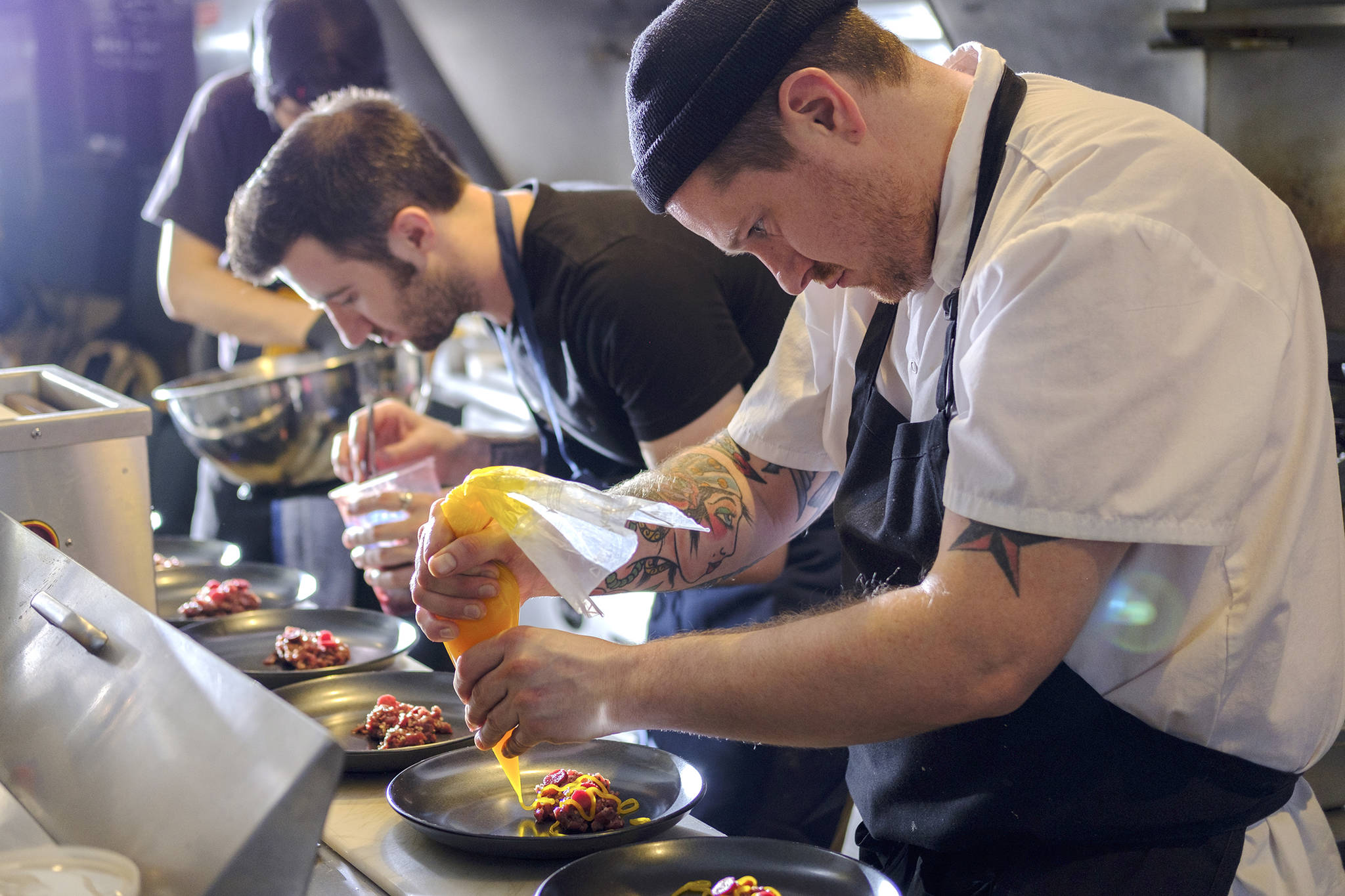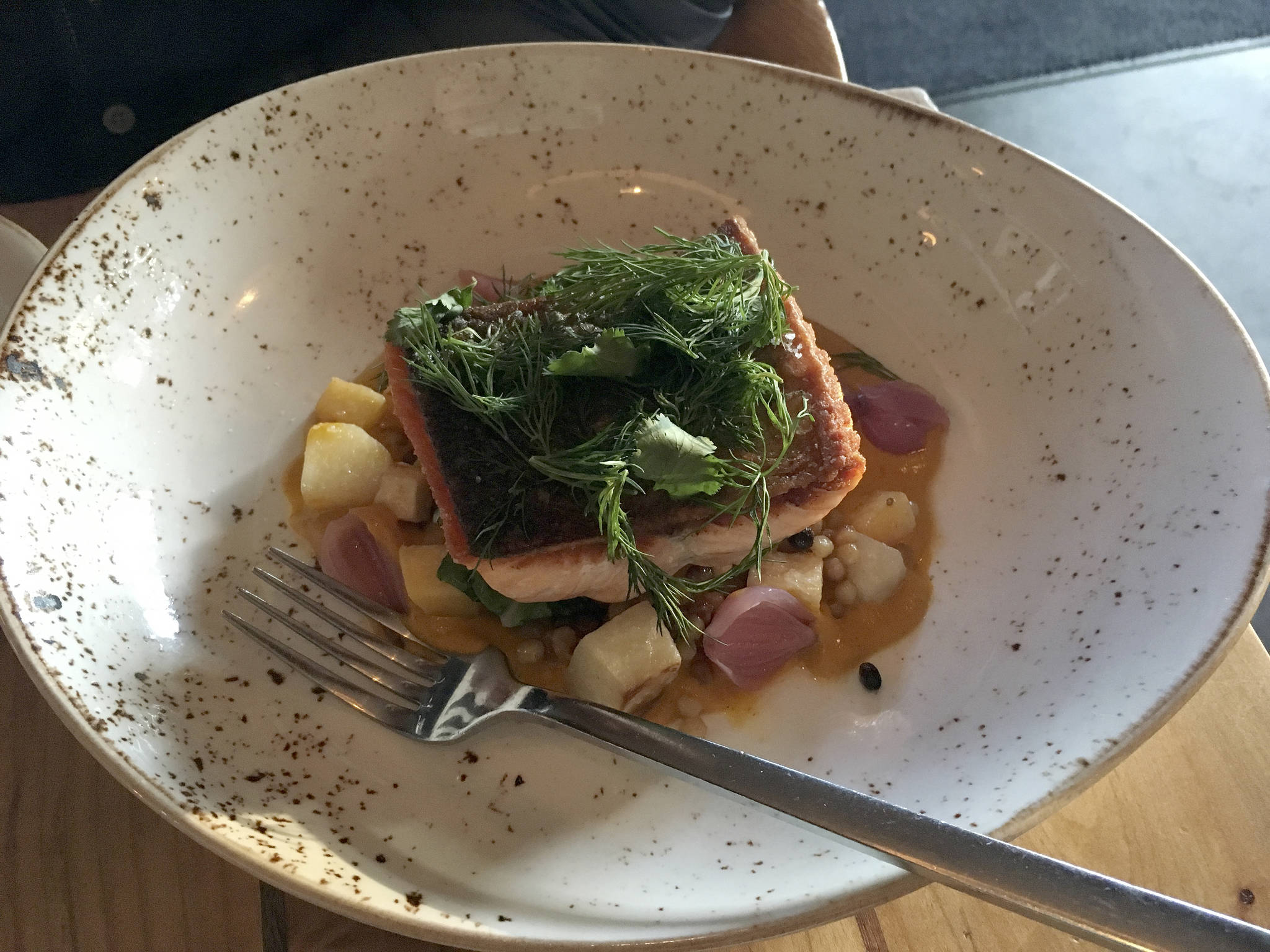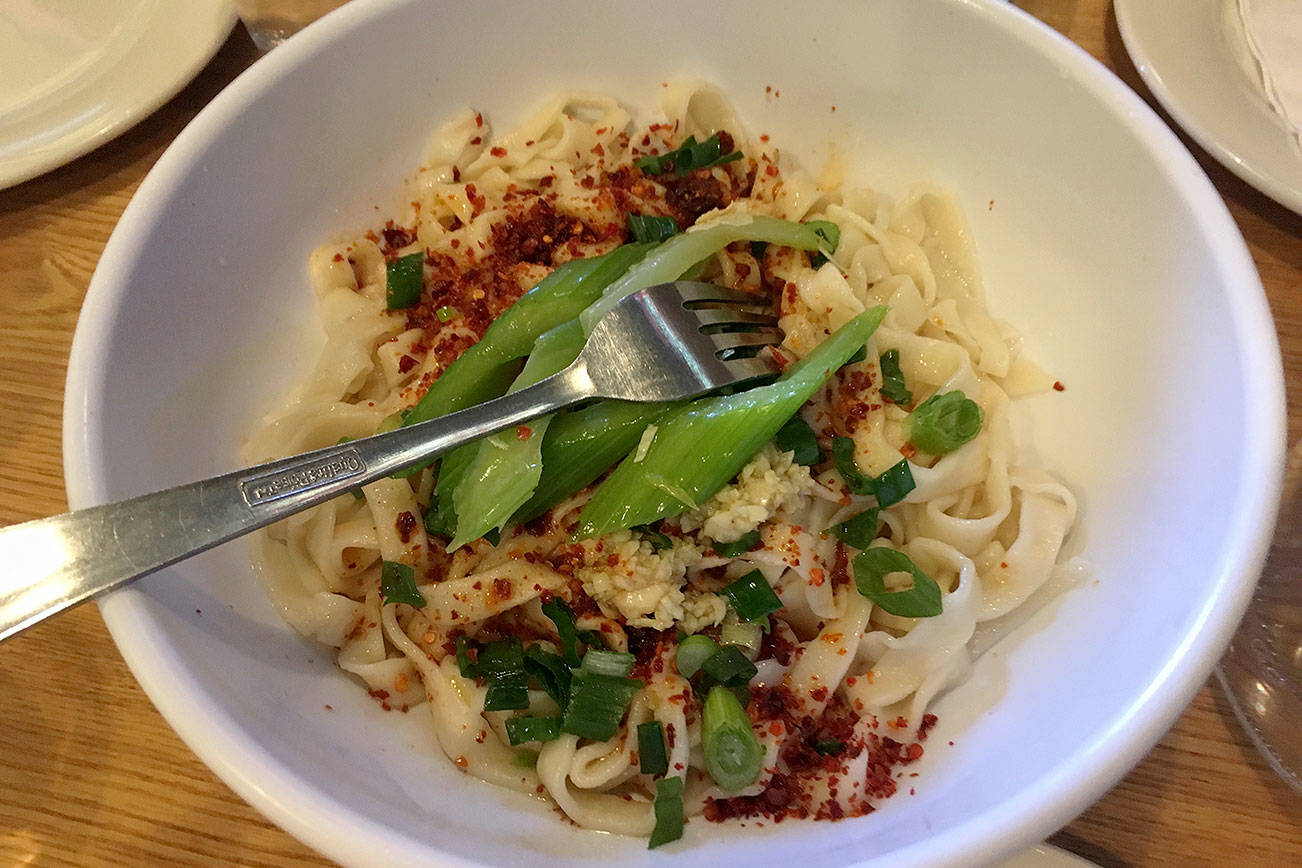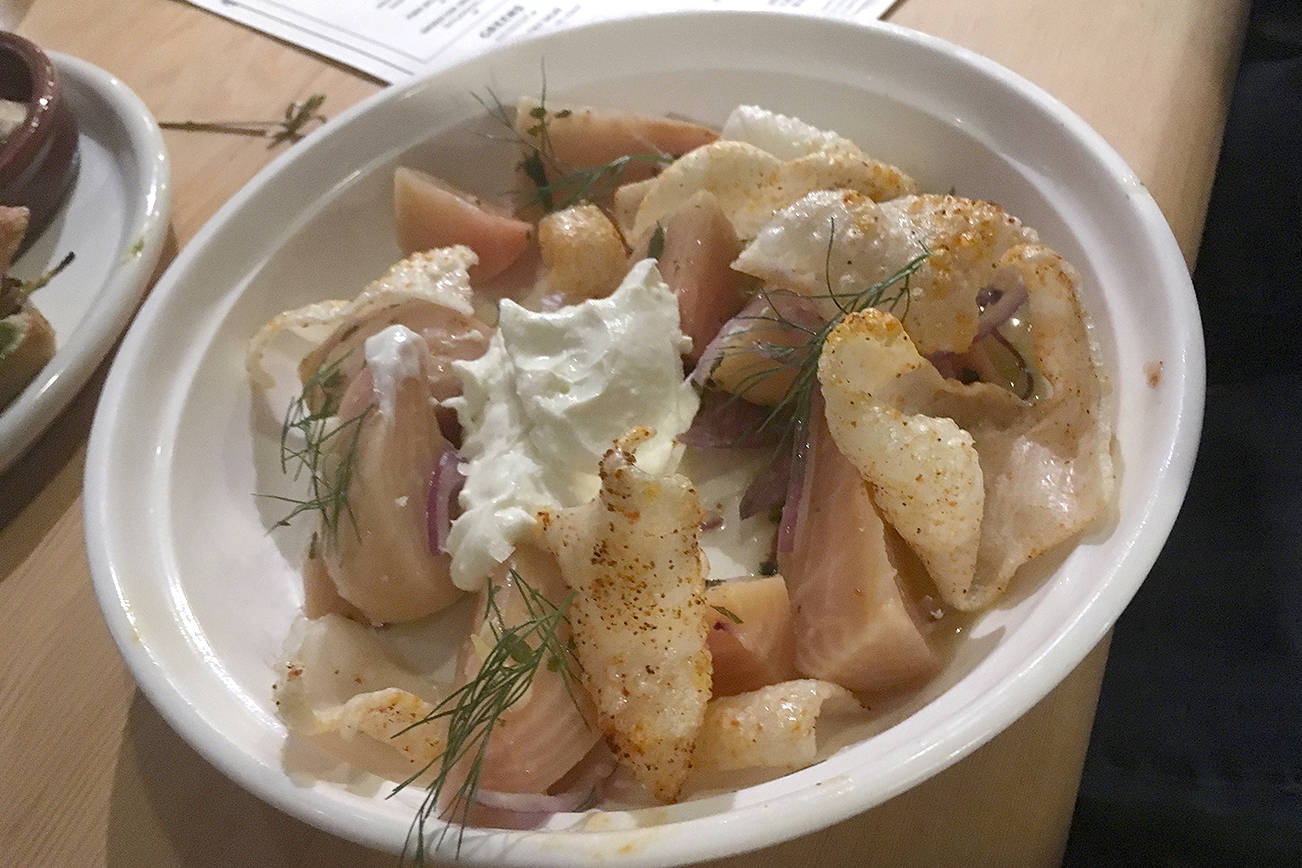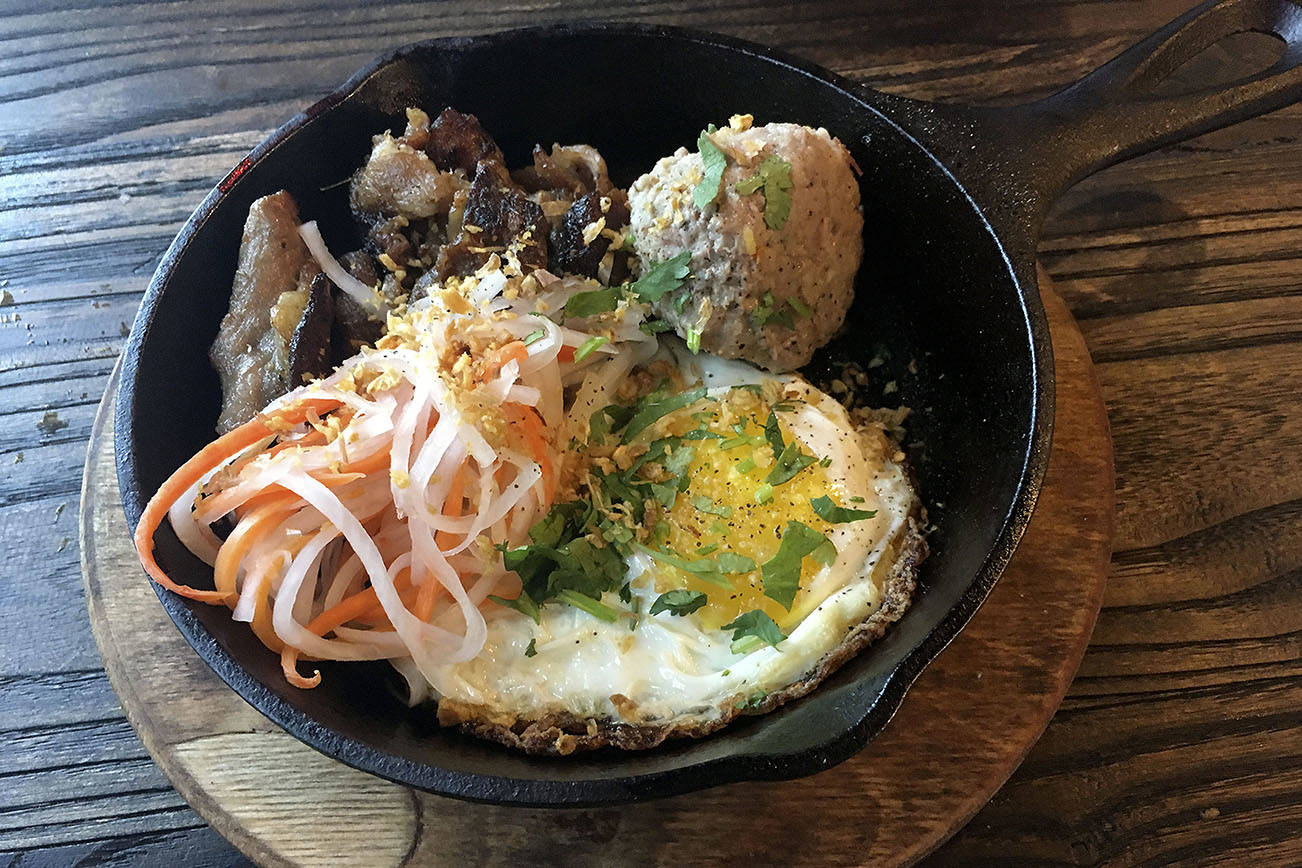When the owner of Seattle’s most revered cocktail bar, Rob Roy, joins forces with a certified cicerone who once worked the bar at Canon, great drinks are expected. But as co-owners of No Anchor Bar, Anu and Chris Elford—who, yes, are married—have crafted one of the most popular and accolade-laden menus in town. In fact, this Belltown beer bar, which also serves food, was one of only two Seattle restaurants to be nominated for a James Beard Award for Best New Restaurant in Washington. And following my fawning review earlier this year, it is a shoo-in for Seattle Weekly’s Best New Restaurant of 2017.
The accolades are due in part to the hire of Spur’s former chef, Jeffrey Vance. With him onboard, the establishment that touts itself as serving “weird beer and rad food” has quickly come to represent a kind of Holy Trinity in Seattle’s restaurant scene. It’s a place where you can get a beer you’ve likely never heard of (or a beer cocktail) and a plate of something thoroughly unique and deeply Pacific Northwestern. For beer aficionados or newbies, an excellent grid on the wall (and on menus) positions beers according to different values, like Approachable or Esoteric. Excited to learn more about the restaurant, I spoke with Anu about the genesis of No Anchor, and what makes it a haven for beer nerds and foodies alike.
What led you both down the beverage path, and do you think people are surprised that you ventured into the food world? As an owner, it’s my first foray into the food world. We both believe that if we’re going to focus on an outstanding beverage program and we’re also going to offer food, we need to have the same standard. I’m always surprised when a restaurant doesn’t have a good beverage program, or vice versa. I always wanted to get into food, but it just didn’t work out at Rob Roy. I was a line cook years ago at Minnie’s Diner on First and Denny, though—kind of an old punk-rock place. I was hired to be a busser/server, but I often jumped into cook. Chris worked in a barbecue joint in Richmond, Virginia.
What was the inspiration behind No Anchor?
It grew organically, really. I’d been casually looking at spaces around Seattle to open a second location, not knowing what the concept would be. We both had a back pocket of concepts that we could plug in depending on the neighborhood. But with Chris’s beer background, it was a no-brainer: We both wanted to give that cocktail experience to the beer bar.
How do you source such unique beers, and what’s one of the most esoteric? Chris opened up Proletariat in New York City, which has often been rated as the best beer bar in New York. From there he built some good relationships with distributors, so he knows where to look. But he also has a huge knowledge of what times of year certain beers are brewed, so he keeps that in mind when ordering. Sometimes he has to order months in advance, especially if it’s coming from Europe. The most esoteric beer we’ve had was the Way Beer Barleywine that was aged in amburana barrels. Amburana is a rare Brazilian hardwood that gives off a very distinctive aroma and flavor. Chris and I were fortunate enough to visit the Way Beer brewery in Brazil a couple of summers ago.
How do you figure out where to put beers on the grid? For some of us it takes a while to place the markers. For Chris, he just knows right away. The easier gauge is Modern vs. Traditional, because that’s just about brewing styles. For Approachable vs. Esoteric, we say that it comes down to what’s chuggable. Can you drink it really quickly like a pilsner, for instance? We also take into account what people are asking for a lot. Lately, sours are a big trend. So while they might be intrinsically Esoteric, we’ll put them closer to Approachable because that’s what people have a taste for.
Talk a little about beer cocktails. As owner of Rob Roy, you have some experience crafting out-of-the-box cocktails. So there’s only two that actually have beer in them: the End of Days, on draft, and The Radler, with grapefruit, Campari, and IPA. The others are all influenced by beers, so they may contain hops or use beer-brewing techniques. We wanted to have a classic Martini, but we use oyster shells in the vodka. It’s an esoteric brewing method to get minerality in beers. The vodka rests on crushed oyster shells, and then gets strained through a fine cheesecloth. To that we add our housemade aperitif that takes the place of vermouth, and serve it with an oyster shell with some caviar in it. Beer is the oldest fermented beverage on earth. We like to take these techniques and apply them in different ways.
People may be surprised that a beer bar has some of the best food in town. How did you feel about your James Beard nomination? I was shocked, to the true definition of shock. When Jeff told me, I think I just stood there with my mouth open—but not because I don’t think we’re up to that level. I just didn’t think we fit the James Beard mold. But then I was like, of course, because the people here are just amazing and every plate that goes out is so beautiful.
What should people consider when choosing a beer to go with a particular food? People will often choose a beer with similar flavors to the food they’re eating, which of course works well. But sometimes it’s nice to do the opposite. Like if you have a steak, you could go either way: You could have a light, sour beer with acidity to help you cut through every bite of the steak and refresh the palate, or you could pick something really robust and earthy, like a porter, to highlight the fatty, buttery flavors. Think about the flavors you want to enhance in your dish, and go for a beer that will bring them out.
People seem to be going crazy for your beetroot pelemi [Russian-style dumplings with fresh sheep’s-milk cheese], and I absolutely love your pickled smoked mussels. What is the philosophy behind the food? Everything is done with purpose, and we don’t do things just so they sound cool on the menu. In fact, there are many dishes that have many more precious things in it that we don’t even mention on the menu. There is a lot of process behind every dish. On our raw oysters, we actually use a mignonette made with beer. Anything left from the beer lines drains into a bucket in our walk-in. That’s used to make a beer vinegar that’s barrel-aged to taste and then mixed with spruce-tip oil. We also have a dessert that’s Muscat grape sorbet with butterscotch drizzled over the top. The sorbet sits on a barley-malt praline and whipped vanilla yogurt. The barley malt comes from Westland Distillery.
What word of advice would you give people who aren’t beer connoisseurs when they come into No Anchor? I think it might feel a little intimidating to go to a beer bar that’s gotten lot of press and a James Beard nom. But it’s relaxed, so come in and get comfortable. If it’s super-busy, look at the beer chart, but don’t be afraid to ask questions. It’s called No Anchor because there are no limitations for us or our guests. 2505 Second Ave. #105, 448-2610, noanchorbar.com
food@seattleweekly.com
